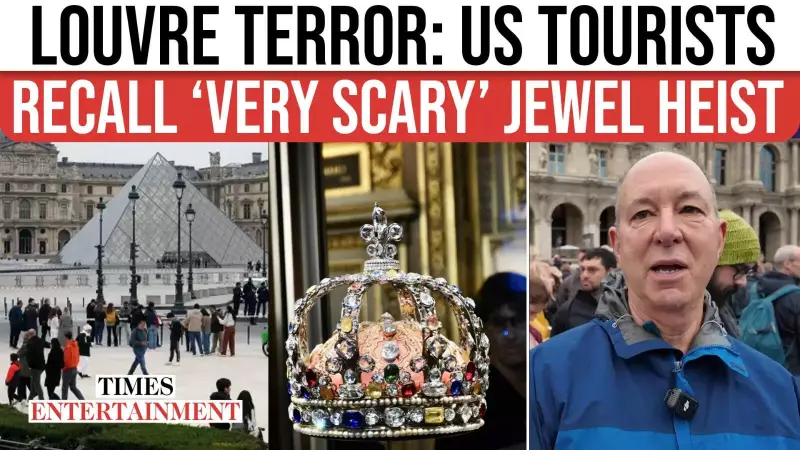
In a scene straight out of a Hollywood thriller, armed thieves pulled off a breathtaking daylight robbery at one of the world's most famous museums, leaving American tourists traumatized and security officials scrambling.
The Brazen Daylight Attack
According to eyewitness accounts from shocked US tourists, a group of armed criminals executed a meticulously planned heist at the Louvre Museum in Paris, making off with jewelry valued at a staggering ₹102 million (approximately $1.2 million). The robbery occurred in broad daylight, sending panic through the iconic museum's corridors.
Tourists Describe Moments of Terror
"It was absolutely terrifying," one American visitor recounted. "One moment we were admiring historical artifacts, the next we were confronted with armed men moving with chilling precision. They knew exactly what they were after."
Another tourist described the thieves as "calm and professional" despite the chaotic scene unfolding around them. "They moved like they had done this before. There was no panic, just cold efficiency that made it even more frightening."
Security Breach at World-Famous Museum
The successful theft raises serious questions about security measures at the Louvre, one of the most visited museums globally. How armed individuals managed to bypass security protocols and escape with such valuable loot has left authorities and security experts baffled.
French police have launched a massive investigation, reviewing surveillance footage and interviewing numerous witnesses. The heist represents one of the most significant museum thefts in recent years and has sent shockwaves through the international art and jewelry community.
International Implications
The involvement of American tourists as key witnesses adds an international dimension to the investigation. US embassy officials are coordinating with French authorities to ensure the safety of citizens who witnessed the traumatic event.
As the investigation continues, museum security experts worldwide are reevaluating their protocols, concerned that this successful heist might inspire copycat crimes at other high-profile cultural institutions.





